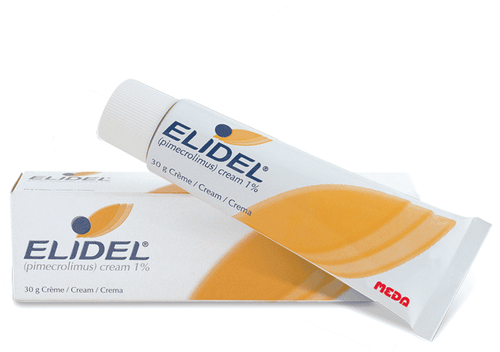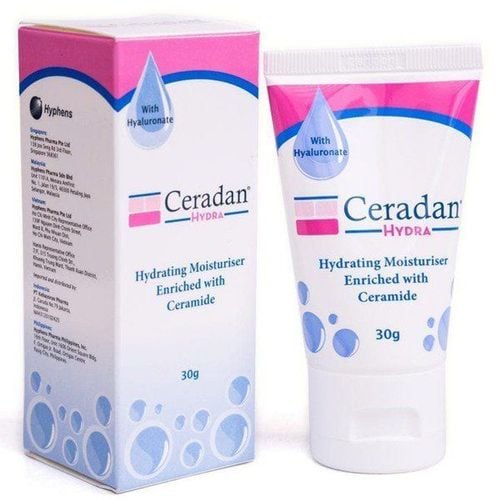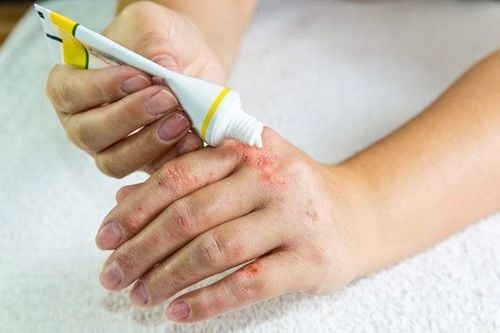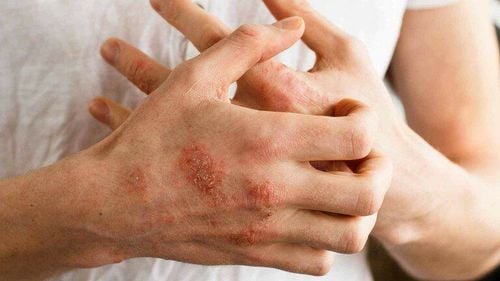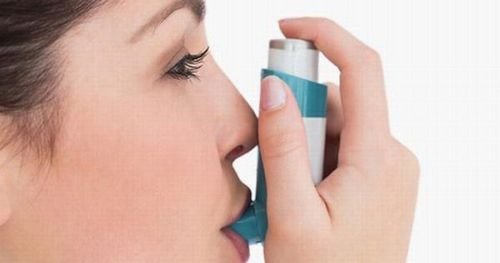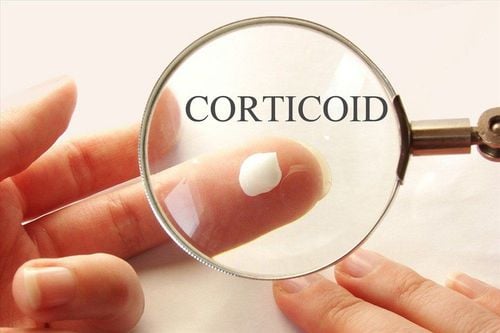This is an automatically translated article.
Article written by MSc Nguyen Hoang The Nhan - Pediatrician - Neonatology, Department of Pediatrics - Neonatology - Vinmec Nha Trang International General Hospital.
Atopic dermatitis is a chronic skin condition characterized by dryness and itching of the skin, is a fairly common condition in infants and young children, usually manifesting for the first time when the baby is 3 to 6 months old.
1. Causes of atopic dermatitis in children
The exact cause of atopic dermatitis is unknown, but many related problems include:
Genes: skin problems may be related to the child's parents. Immune system: An immature immune system can affect the protection of skin structures. External factors: Including cold weather, using very hot water in the shower, using soap, living in hot, dry temperatures.
2. Children with risk factors for atopic dermatitis?
Household members atopic dermatitis, allergies.
3. Symptoms of atopic dermatitis in children?
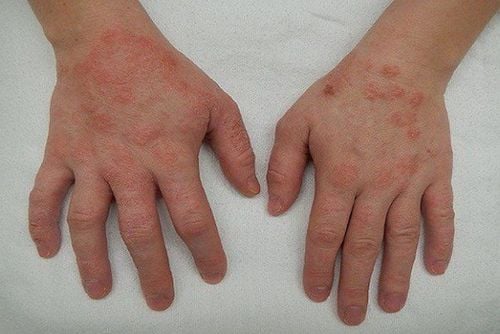
Viêm da cơ địa ở trẻ biểu hiện như thế nào?
Symptoms may appear or disappear at one time or all of the time, any area of the body can be affected. In babies, symptoms often appear on the face, neck, scalp, elbows, and knees. In children, symptoms usually affect the skin in the elbows, behind the knees, on the sides of the neck, around the mouth, and on the wrists, ankles and hands.
Other symptoms are also:
Dry, scaly skin Severe itching Red and swollen Stomach Pale skin on the face Small, raised bumps that can become brittle and leak fluid if scratched These rough bumps on the face, upper arms, and thighs Dark skin of the eyelids or around the eyes Skin changes around the mouth, eyes, or ears Symptoms of atopic dermatitis can resemble other health conditions. To be sure, take the baby to medical care facilities for a better diagnosis.
4. When is atopic dermatitis diagnosed in children?
The health care center will ask about your child's symptoms and health history, symptoms of atopic dermatitis, asthma or nasal allergies or allergic rhinitis in family members.
In addition, the baby's allergy symptoms are also important in the diagnosis.
The health care center will look for signs of atopic dermatitis, allergy tests are specific to your child, testing may not be absolutely necessary in pediatric patients with obvious symptoms but It is sometimes very important in difficult-to-diagnose cases.

Nên đưa bé tới thăm khám với các bác sĩ khi trẻ có các triệu chứng viêm da cơ địa
5. Commonly used tests
Blood test : Your child's blood can be checked for levels of IgE, an active substance released by the immune system if your child has allergies and an allergy-related illness. Skin prick test: Skin tests can be performed to check for allergies or other skin conditions, but their accuracy is not high, so they are rarely used in clinical practice.
6. How is atopic dermatitis in children treated?
Treatment is based on the patient's symptoms, age and health. It also depends a lot on the severity of the condition but there is no cure for atopic dermatitis, all treatment is only symptomatic treatment with the aim of reducing itching and inflammation, replenishing moisture. for the skin to prevent recurrence and prevent infection.
Treatment of atopic dermatitis includes:
Stay away from skin irritants as advised by your health care center. Bathe with mild detergents or bath solutions recommended by your healthcare provider. Keep your child's fingernails short to avoid scratching when he or she scratches the itch to reduce the chance of a skin infection. Use a moisturizer recommended by your health care center Use anti-inflammatory and anti-itch medications prescribed by your doctor eg: Corticosteroid creams or ointments containing similar ingredients for the purpose of reducing itching and inflammation, swelling of the skin. Because this medicine has a risk of skin damage if taken in the wrong dose, any abuse of the drug and use of the drug not exactly as directed by your doctor is not recommended.
Antibiotics: If the skin is inflamed and the risk of infection is high, your child can use oral antibiotics with topical antibiotics.
Antihistamines: is an effective anti-itch medicine when the baby itches because of atopic dermatitis, the drug is often used before bedtime to help the baby improve sleep to avoid itching that makes it difficult to sleep.
Calcineurin-inhibiting cream or ointment helps reduce itching and swelling to help reduce inflammation.
Phototherapy: in some severe refractory cases, phototherapy is given as an adjunct to symptom relief, it is often used in older and cooperative children.
Immunosuppressive drugs: drugs affecting the immune system can be used in patients with treatment-resistant atopic dermatitis, the drug has good therapeutic value but has many potential risks with many undesirable effects. Should not be commonly used, laboratory indicators should be checked regularly when your child is prescribed medicines in this class.
Drugs of biological origin : Currently still experimental and not recommended for widespread use.
7. Possible complications of atopic dermatitis in children?
Bacterial skin infections Disturbed sleep, activities and can lead to depression because of stress. Abuse of steroid cream can leave many complications such as thinning of the skin, skin darkening due to steroids...
8. How can I prevent my baby from getting sick?
This is a disease that is often passed on from parents to children, so it cannot be prevented.
Atopic dermatitis has no cure but it usually gets better or goes away as your child gets older. There are times when you can't find your child's symptoms, but there are also times when the symptoms get worse when it's called a flare-up. To make sure your child doesn't have those flare-ups you need to make sure your child does the following:
Stay away from allergy triggers, common triggers include: Wool, soap, chemicals substances, eggs, cow's milk, dust mites or pet hair. Sometimes stress is also an allergy trigger. Stop scratching the skin, try to keep your child's skin from scratching as that can worsen symptoms and increase the risk of skin infections. Always keep your child's fingernails short enough to avoid scratching the skin from itching. Take a warm bath, not too hot, take a quick shower, don't soak for more than 10 minutes, let it dry naturally or use a cotton towel to gently pat the skin dry. Use a moisturizer or moisturizing ointment after bathing. Wear soft, absorbent clothes and limit wearing colored clothes to reduce the risk of allergic reactions to dyed fabrics. Keeping cool, trying to keep your child cool, hot, and sweating can make atopic dermatitis worse. Take your child to the doctor periodically to check the damage and consult on the issue of maintaining moisture for the baby's skin.

Đưa trẻ đi khám định kỳ để kiểm tra độ tổn thương cho da của bé.
9. When should parents take their children to the hospital to check for skin problems?
Symptoms get worse There are signs of skin infection such as redness and swelling of the inflamed skin with discharge, pain when touched, fever... Symptoms of dermatitis appear in new places. The pediatric department at Vinmec International General Hospital is the address for receiving and examining diseases that infants and young children are susceptible to: viral fever, bacterial fever, otitis media, pneumonia in children ,....With modern equipment, sterile space, minimizing the impact as well as the risk of disease spread. Along with that is the dedication from the doctors with professional experience with pediatric patients, making the examination no longer a concern of the parents.
Customers can directly go to Vinmec Health system nationwide to visit or contact the hotline here for support.
MORE:
Symptoms of atopic dermatitis Allergic rhinitis: Causes, symptoms, diagnosis and treatment Skin infections: What you should know




